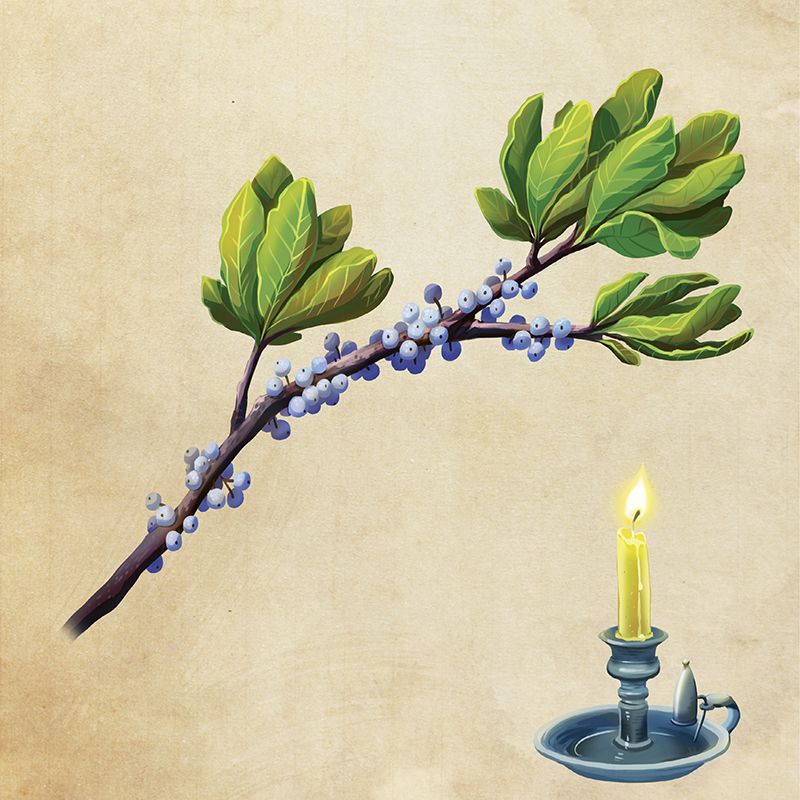One of the Lowcountry’s most prolific evergreens is the wax myrtle (Morella cerifera). It grows easily and everywhere—along marshes and in dunes, woods, and backyards. Perhaps you know it by one of its other names: sweet myrtle, sweet bay, bayberry, waxberry, tallow bush, or mickleberry. But historically, it was called the “candleberry tree,” because the plant’s berries produce a wax that has long been used to make a Christmastime favorite, bayberry candles

Plant Facts These fast-growing native shrubs or small trees (depending on how you prune them) are found from New Jersey to Florida and as far west as Texas. Reaching 15 to 20 feet high, they have appealing gray bark and glossy green leaves.
Fruit Forward Fruit appears in late summer to winter on only the female plants. The small, grayish, waxy berries grow in clusters on the stems of the previous season’s growth.
Flame & Fortune In America’s earliest days, the lighting of a bayberry candle at Christmas and New Year’s was thought to bring fortune for the coming year. The slow-burning candle was to stay alight until after midnight and then be allowed to burn out on its own. An old saying went, “On Christmas night, a bayberry candle, burned to the socket, brings luck to the house, food to the larder, and gold to the pocket.”
Waxing Nostalgic Candles were once the primary source of lighting, yet their quality varied. Tallow candles made from rendered animal fat were inexpensive but often had a disagreeable odor. The preferred options were made from beeswax or “myrtle wax,” which burned clear, lasted longer, and—as explorer John Lawson noted in 1710—had “the sweetest smell imaginable… fit for a Lady’s Chamber.”
Sweet Smell of Success Chandlers (candle makers) did a lucrative business in Charleston’s affluent Colonial society. Metalsmiths also profited: candleholders used in kitchens were made of wrought iron, tin, and pewter, while those showcased in the living areas of wealthy locals gleamed in brass and polished silver.
Family Affair Given the abundance of wax myrtle trees, even everyday folk could have fine candles in the 18th century if they were willing to work for them. While visiting the Carolinas in 1731, naturalist Mark Catesby wrote about families harvesting berries in the fall near the seashore. “The man cuts down the trees, while the children strip off the berries into a porridge pot; and having put water to them, they boil them until the oil floats, which is skimmed off into another vessel.” The process was repeated until the wax was clarified to a “transparent greenness” that yielded a “grateful smell.”